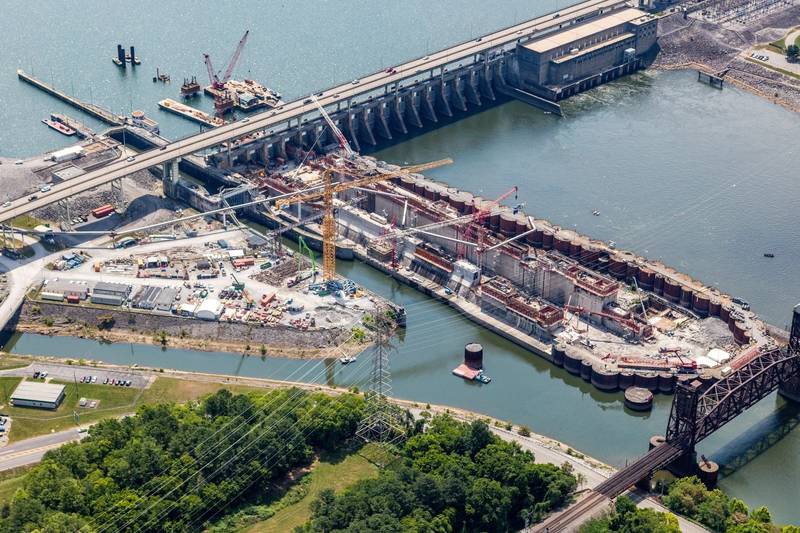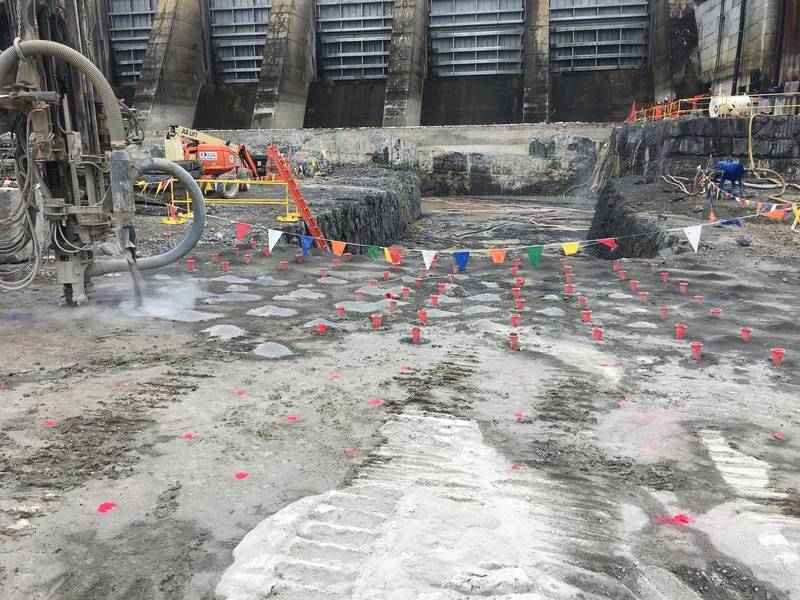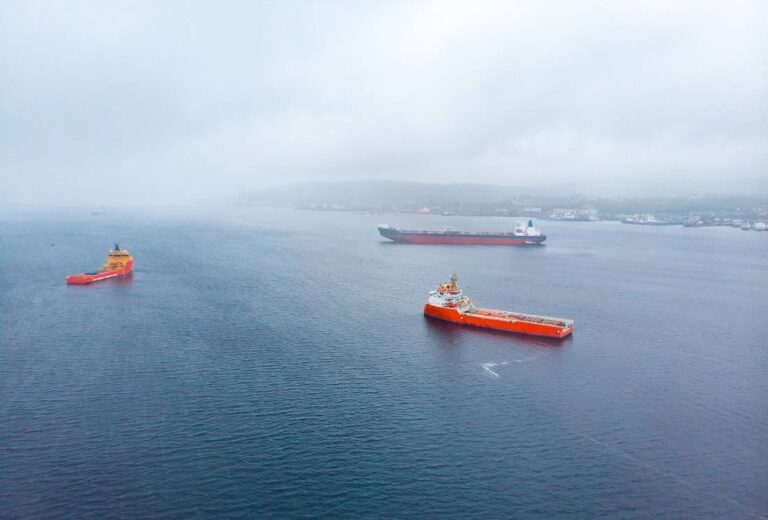
This episode of Maritime Matters: The MarineLink Podcast, delves into the critical importance of the inland waterways infrastructure in the U.S., focusing on the Chickamauga Lock Project on the Tennessee River. A trio of experts – Tracy Zea, President & CEO of WCI; Elizabeth Burks, USACE Nashville Division Chief; and Capt. Joe Cotton, Project Manager, Chickamauga Lock Project – discuss the current state of the inland waterways, the history and significance of the Chickamauga Lock, and the ongoing efforts to modernize this essential infrastructure.
Key Points
- There are 12,000 navigable miles of inland waterways in the U.S.
- 80% of locks are past their 50-year design life, increasing failure risk.
- Chickamauga Lock is a major civil works project of national importance.
- The new lock will significantly increase efficiency for barge traffic.
- Barge transportation is the cleanest – and sometimes only — mode of surface transportation for large equipment.
- The Chickamauga Lock Project is expected to be operational by 2027, fully completed by 2029.
- Increased funding for the Corps of Engineers is essential for modernizing infrastructure.
 An aerial view of the Chickamauga Lock Replacement Project June 18, 2024, on the Tennessee River in Chattanooga, Tennessee. The U.S. Army Corps of Engineers Nashville District is constructing the new lock. When completed, it will be 600-feet long and 110-feet wide, and will handle nine barges per lockage. It will reduce commercial transit times by 80%.
An aerial view of the Chickamauga Lock Replacement Project June 18, 2024, on the Tennessee River in Chattanooga, Tennessee. The U.S. Army Corps of Engineers Nashville District is constructing the new lock. When completed, it will be 600-feet long and 110-feet wide, and will handle nine barges per lockage. It will reduce commercial transit times by 80%.
USACE Photo
The Chickamauga Lock, a vital component of the U.S. inland waterways system, is undergoing a much-needed rebuild to ensure continued economic and transportation benefits for the Tennessee Valley and beyond. The project, authorized in 2003 and expected to be completed by 2029, is a testament to the importance of modernizing aging infrastructure to maintain America’s competitive advantage in global trade. It also is a testament to the very long life-cycle, and requisite need for consistent funding to power critical infrastructure projects of this size.
The Chickamauga Lock: A History
Commissioned in 1940 and a major component of the New Deal, the Chickamauga Lock has been a cornerstone of the Tennessee Valley’s economic development. Originally designed for smaller barges, today’s larger 35-foot-wide barges present challenges for the existing lock chamber, resulting in significant delays and inefficiencies.
“We are currently limited to passing one barge at a time, which can take up to 15 hours for a typical 15-barge tow,” said Cotton. The new 110-by-600-ft. chamber will enable the passage of nine barges at a time, drastically improving throughput times and safety for mariners.
 Blasting excavation activities take place at Chickamauga Lock in Chattanooga, Tenn. on March 17, 2018. Similar blasting activities will take place between 2021-2022 at the Soo Locks in Sault Ste. Marie, MI to construct the New Lock at the Soo.
Blasting excavation activities take place at Chickamauga Lock in Chattanooga, Tenn. on March 17, 2018. Similar blasting activities will take place between 2021-2022 at the Soo Locks in Sault Ste. Marie, MI to construct the New Lock at the Soo.
U.S. Army photo by Dewayne Ponds
Key Milestones & Project Timeline
As with any public works project of this magnitude, levels and timing of funding is central to whole project efficiency.
“The decision was made to pull two mega projects out, the Kentucky Lock and Chickamauga Lock, so the team can really focus their efforts on delivering these projects,” said Burks. “So they’ve been set aside from the typical portfolio that the district is executing on an annual basis, pulling those aside and really operating at a different level, a different speed, because we’re all about trying to deliver these projects for the nation. With the support of Waterways Council and other advocates including members of Congress, we’ve been able to receive supplemental funds that really gives us the boost in funding that we have to execute these projects faster,” said Burks. “Incremental funding is really an inefficient way to build a project. You would never build a house one paycheck at a time, it just wouldn’t be efficient, right? So with the ability to get this large influx of funds through supplemental, we can focus our efforts and get these construction projects built faster and into the system.”
The project faced funding challenges early on, but significant progress has been made since concrete placement began in 2018. Major milestones include:
- 2010s: Site preparation and cofferdam construction
- 2017: Award of the lock chamber contract
- 2021: Award of the upstream approach wall contract
- 2026: Expected completion of lock chamber work
- 2027: Operational completion
- 2029: Full project completion
One of the most significant upcoming milestones is the arrival of the upstream miter gates, weighing 150,000 pounds each. “This effort is comparable to craning an M1 Abrams tank into place and welding 14 sections together,” Cotton said.
Economic, Environmental Impacts
The upgraded Chickamauga Lock will enhance efficiency and support the growing demand for barge transportation. The inland waterways offer a sustainable alternative to road transport, reducing congestion and emissions. “Barge transportation is the cleanest mode of surface transportation, providing a valuable way to alleviate traffic and lower CO2 emissions,” Zea emphasizes. Moreover, the Chickamauga Lock is already experiencing increased traffic, with a 50% rise in barge tonnage even before the new lock becomes operational. “We projected steady traffic, but demand has exceeded expectations,” Cotton says, reinforcing the project’s necessity.
The Chickamauga Lock rebuild represents a broader effort to modernize the nation’s inland waterway infrastructure. With supplemental funding and streamlined project execution strategies, the Corps aims to complete future projects in shorter timelines. “Once funding was secured, the Nashville District executed efficiently, and we’re hopeful this becomes the norm moving forward,” Zea said.
The successful completion of the Chickamauga Lock will not only improve efficiency but also solidify the U.S. inland waterways’ role in maintaining global competitiveness. As the project progresses, stakeholders remain committed to delivering a state-of-the-art infrastructure that will benefit the region and the nation for decades to come.
Watch and/or listen to the full Maritime Matters: The Marinelink Podcast:



